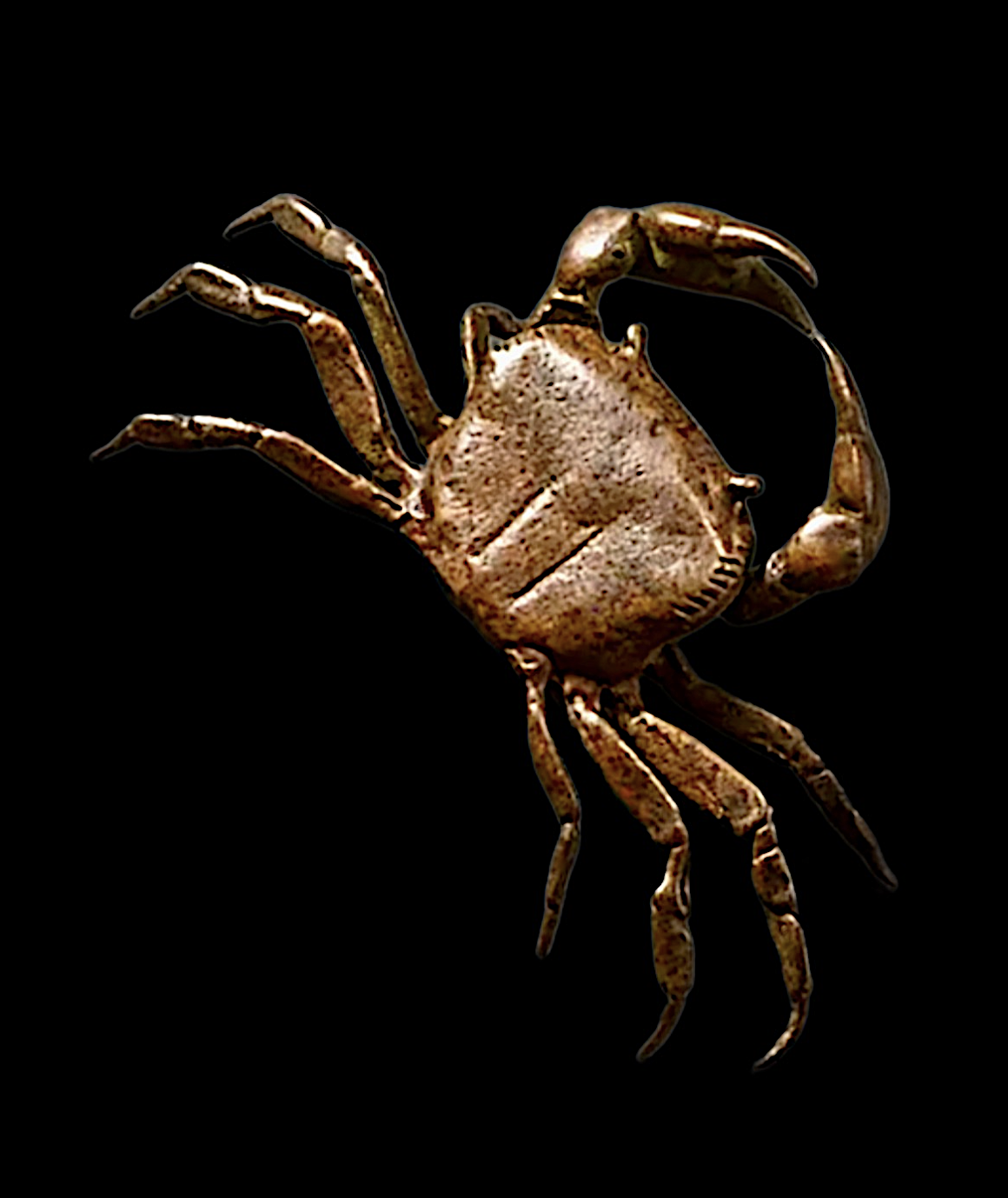

Title: Contemporary Decorative Handmade Bronze Crab Animal Art Sculpture
Shipping: $29.00
Artist: N/A
Period: Contemporary
History: Art
Origin: North America > United States
Condition: N/A
Item Date: N/A
Item ID: 827
This beautifully handcrafted decorative bronze crab is a unique creation, with each piece individually cast in a foundry. The small crab measures approximately 6 cm in length and 3.5 cm in width, with a weight of about 21.4 grams. Crafted with incredible attention to detail by skilled artisans, it features a textured surface and a stunning brown-reddish patina, evoking the charm of an antique. If this piece were an original antique, obtaining this level of quality could cost you up to ten times more. The art of creating animals from bronze dates back thousands of years, originating in ancient civilizations such as Mesopotamia, Egypt, and China. Bronze, an alloy of copper and tin, became a favored medium for artisans due to its durability, malleability, and ability to capture intricate details. This versatility made it ideal for sculpting lifelike representations of animals, which often held cultural, religious, or symbolic significance.
Ancient Beginnings / Mesopotamia and Egypt: In Mesopotamia, bronze animal sculptures were used as decorative objects, offerings to deities, and symbols of power. Lions, bulls, and eagles were common motifs representing strength and divine protection. Egyptian artisans crafted bronze animals such as cats, scarabs, and falcons, associated with gods like Bastet, Khepri, and Horus. These pieces were often placed in tombs as part of burial rituals. China: During the Shang and Zhou dynasties (1600–256 BCE), Chinese bronzes often depicted dragons, tigers, and mythical beasts. These animals adorned ritual vessels and were believed to connect the physical and spiritual worlds. Ancient Greece and Rome: The Greeks and Romans refined bronze casting techniques, creating statues of animals to celebrate hunting, adorn public spaces, and depict mythological creatures. The bronze "Capitoline Wolf," a symbol of Rome, exemplifies this tradition. Renaissance and Beyond Bronze animal sculptures saw a resurgence during the Renaissance, as European artists like Benvenuto Cellini mastered the lost-wax casting technique. This era emphasized anatomical accuracy and expressive poses, often depicting animals in motion or engaged in natural behaviors. The Craftsmanship Behind Bronze Animal Sculptures Creating a bronze animal sculpture is a meticulous process requiring exceptional skill and patience. Design and Modeling: The artist begins with a detailed sketch or clay model to capture the animal’s proportions and expression. Wax Casting: A mold is made, often using the lost-wax process, where molten wax is poured into the mold to create a hollow form. The wax model is then coated with a ceramic shell. Bronze Pouring: The ceramic mold is heated to remove the wax, leaving a cavity. Molten bronze is poured into this cavity and allowed to cool. Finishing Touches: Once the bronze hardens, the mold is broken, and the sculpture is cleaned, polished, and detailed by hand. Techniques such as chiseling, engraving, and patination enhance the texture and finish, giving the sculpture its characteristic appearance. Symbolism and Modern Appeal Bronze animal sculptures continue to captivate art enthusiasts and collectors worldwide. Their timeless beauty, combined with the skill required to create them, reflects humanity's enduring fascination with nature and its creatures. From antique imitations to contemporary pieces, these sculptures celebrate the bond between art, craftsmanship, and the natural world.